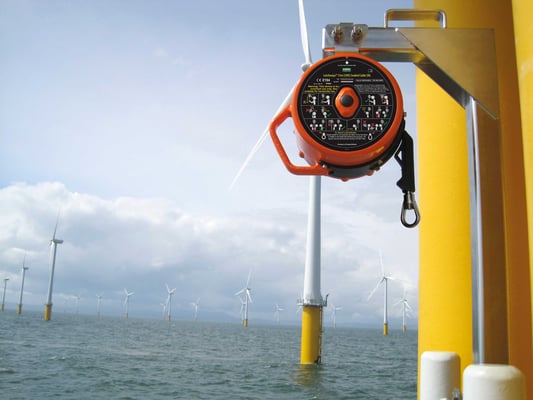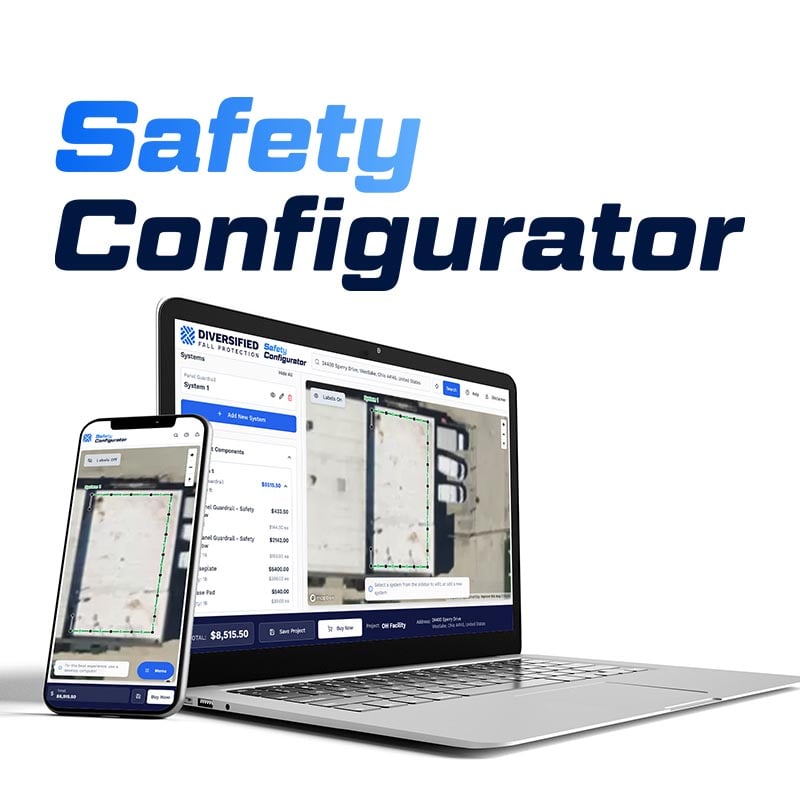
5 Things To Consider When Selecting the Correct Self-Retracting Lifelines
According to the U.S. Bureau of Labor Statistics (BLS), even with increased awareness and safety training, falls from height remain a top cause of death in many industries, including construction. These troubling statistics underline the importance of choosing the right fall protection solutions.
Self-retracting lifelines (SRLs) have gained popularity in recent years due to their flexibility and high level of protection, making them a great choice for many applications. Self-retracting lifelines (SRLs) allow workers to move freely within a specified area without slack in the line, reducing trip hazards and allowing for smoother movement. They automatically retract and expand but lock in place when a fall occurs. ANSI has separated SRLs into two different classes according to their capability. To learn more about that, click here. But beyond the classification there are other considerations when selecting the right SRL for your application.
Like all fall protection components, SRLs require a deeper level of understanding and must be used properly to provide the intended level of security. Every SRL won't work for every application; they’re simply not designed to. This article will explore how to choose the correct SRL for fall hazards in your workplace.
How to Choose an SRL
When choosing a self-retracting lifeline (SRL), it's crucial to consider several factors to ensure safety and suitability for the task at hand.
- Work Environment: The environment in which the SRL will be used plays a significant role in selection. For instance, some SRLs are designed with special features to accommodate sharp edges, which can damage standard lifelines. These specialized SRLs have more robust line materials or an energy absorber that protects the line from edge damage in a fall. On the other hand, if the work is in an environment with certain chemical exposures or extreme temperatures, an SRL designed for chemical or heat resistance would be more suitable.
- Length of Line: The length of the SRL line should match the working height and coverage area. The line should be long enough to allow the worker to move freely within the working area but not so long that the worker could fall a dangerous distance before the line arrests the fall. In other words, the line's length should limit the free fall distance to a minimum, typically no more than six feet.
- Material: The material of the line can vary based on the work environment and application. Wire rope lifelines are often preferred when there's a risk of cutting or abrasion, as they are more durable and resistant to these hazards. In contrast, synthetic rope or web lifelines are generally lighter, making them more comfortable and less restrictive for workers, especially for long durations. These are typically more suited for applications where the worker needs maximum mobility and cutting or abrasion risks are lower.
- Connector Type: The SRL should have a connector compatible with the worker's full-body harness and the selected anchor point. Connectors come in various styles, including snap hooks and carabiners, and they should be selected based on compatibility, ease of use, and the type of anchorage or harness they will be connected to. The connectors should meet or exceed the relevant strength requirements and be self-closing and self-locking to prevent accidental disengagement.
- Weight Capacity: The SRL must be rated for the combined weight of the worker and their tools. This includes the worker's body weight, clothing, and any tools or equipment they'll be carrying while working at heights. Most SRLs will support a wide range of weights, but it's critical to verify that the SRL's weight capacity exceeds its total load to ensure safety.
Diversified Fall Protection Can Help
Given the increasing number of fatalities related to falls, it's crucial to prioritize fall safety to ensure everyone returns home safely each day. However, choosing the right protection for your company's specific fall risks can be challenging, especially when the consequences of a mistake are so high.
Diversified Fall Protection is committed to helping our clients solve their fall protection issues by utilizing our industry knowledge to engineer effective systems that provide the highest level of fall safety. Our team, active since 1994, has built a reputation for educating clients and supplying fall protection solutions that comply with OSHA regulations. Click here to learn more about how Diversified Fall Protection can help protect your employees from falls.
Schedule an assessment with Diversified Fall Protection
Contact Us to request a fall safety review

b-1.jpg?width=1368&height=1340&name=Rail%20(175)b-1.jpg)

